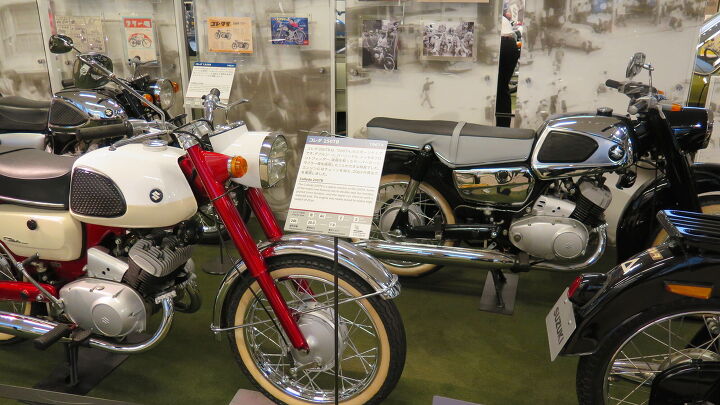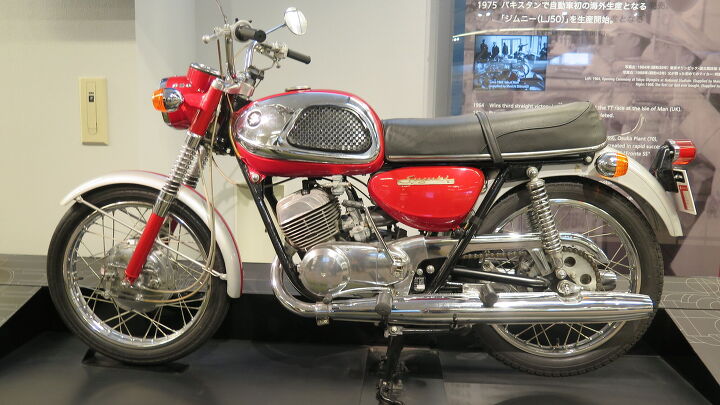Suzuki’s been doing business out of Hamamatsu for quite some time now. 1909, in fact, is the year Michio Suzuki officially began building looms to serve the Japanese weaving industry. Motorcycles and cars came along decades later; you can trace the whole history of Suzuki’s monozukuri culture in the three-story museum – designing and making things with a spirit of craftsmanship. Here are 10 things that jumped out at me.
10. Power Free E2
Everybody knows Honda started out when Soichiro bolted his first engine to a bicycle, but you may not know Suzuki did the same thing with its Power Free 36cc motorized bike in 1952 – 43 years after Michio Suzuki had founded Suzuki as a company that made looms for the Japanese textile industry. Interesting that boosted bicycles are a big thing again, but boosted by batteries instead of gasoline.
9. The Other Katana
The GS550G, which I’m pretty sure was called GS550M Katana in the US, was my first or second bike, and in the ratty state of repair I purchased it in, caused me no end of pain and yet taught me a lot about how not to ride motorcycles and how to not use tools on them. Oh, wait, hang on. This isn’t a GS550 at all, but a GS650G that looks just like my old 550 – a shaft-driven thing I didn’t even know existed. They’ve purloined the Bike magazine test of the 550M over here, which is probably what caused me to purchase it. Hans Muth reputedly had a hand in designing this one too.
8. Kenny Roberts Jr’s RGV500
In 2000, this is the bike KR Jr. rode to four wins in 16 races to win the 500cc GP championship – Suzuki’s last premier championship and the only father/son one. Speaking of GP bikes, Alex Rins’ 2018 MotoGP bike is another hand-crafted thing of beauty…
… and then there’s this guy’s bike.
7. 250 Colleda
Suzuki was already building 250 twins they called “Colleda” in Japan years before they began shipping them to the US. The shiny one is 250TB; the red-trimmed TA in front is the sports version, with a claimed 20 horsepower.
6. T20 Scrambler
By 1965, this one was ready for export to the rest of the world including the US, where it was called X6 Hustler. With 25 horsepower, it was the fastest 250 in the world and began establishing Suzuki’s low-priced high-performance reputation.
5. `61 Suzulight Carry FB
Like Honda, Suzuki’s car and truck business provides the bulk of its income, and allows it to indulge its motorcycle tendencies. The Suzulight was powered by a 359cc two-stroke putting out 21 hp and 23 lb-ft torque.
4. RM62
This RM62 of 1962 won Suzuki its first international race: the `62 50cc at the Isle of Man. The rider was Ernst Degner, who’d been smuggled out of Czechoslovakia in the trunk of a car during the height of the Cold War along with a suitcase full of two-stroke tuning knowledge cadged from Nazi rocket scientists. Read all about it in Stealing Speed. (This is the only mention of Degner I saw in the museum, whose suitcase directly led to Suzuki’s amazing success with two-stroke racebikes.)
3. V-Strom 1000 engine cut…
I’m a sucker for this kind of thing (note hybrid cam drive), and the Suzuki museum does not disappoint, with its simulated assembly line, gear-cutting exhibits, robotic assembly display, etc…
2. Van Vans
Who knew? The `74 Van Van 125 would’ve been perfect for a ride to, as well as onto, the beach. There were also Van Vans 75 and 90 and?? If these ever made it to the Estados Unidos, I never saw one.
Katana Final Edition. HAI!
Well, the whole excuse for going to Hamamatsu was for Suzuki to pimp its all-new Katana. The first GSX-1100S was built in 1981, the last in 2000. This is a rare Katana Final Edition, one of 1100 produced that year, serial number 1100. And away we go 19 years later with an all-new Katana. More to come about it soon…
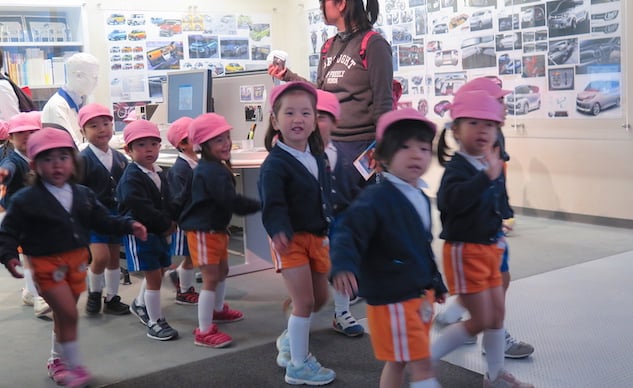
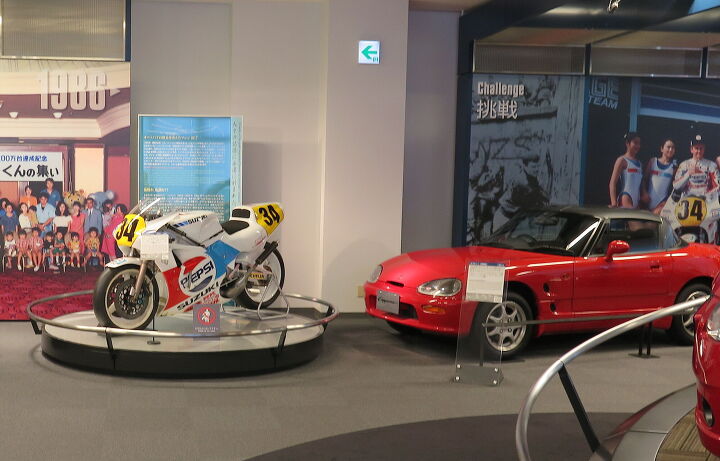
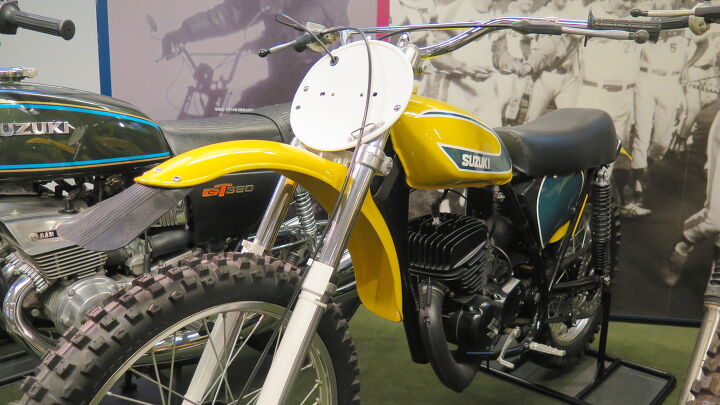
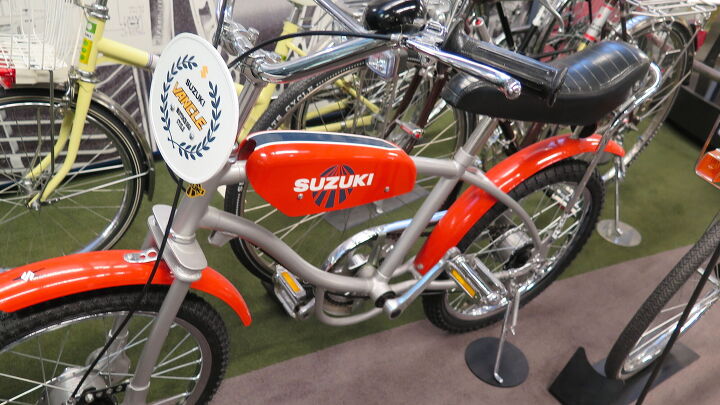
The post Top 10 Things at the Suzuki Museum appeared first on Motorcycle.com.
【Top 10 Malaysia & Singapore Most Beautiful Girls】Have you follow?





